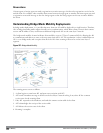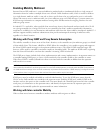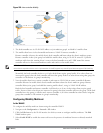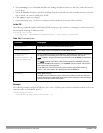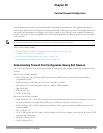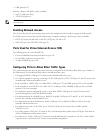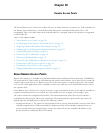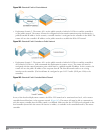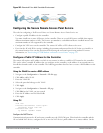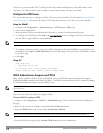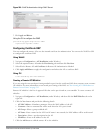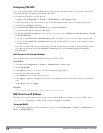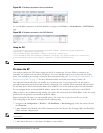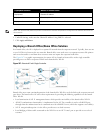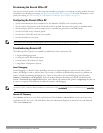
511 | Remote AccessPoints DellPowerConnectW-SeriesArubaOS6.2 | User Guide
Figure 160: Remote AP with aPrivate Network
l Deployment Scenario 2: The remote AP is on the public network or behind a NAT device and the controller is
on the public network. The remote AP must be configured with the tunnel termination point which must be a
publicly-routable IP address. In this scenario, a routable interface is configured on the controller in the DMZ. The
remote AP uses the controller’s IP address on the public network to establish the IPSec VPN tunnel.
Figure 161: Remote AP with Controller on Public Network
l Deployment Scenario 3: The remote AP is on the public network or behind a NAT device and the controller is
also behind a NAT device. (Dell recommends this deployment for remote access.) The remote AP must be
configured with the tunnel termination point which must be a publicly-routable IP address. In this scenario, the
remote AP uses the public IP address of the corporate firewall. The firewall forwards traffic to an existing
interface on the controller. (The firewall must be configured to pass NAT-T traffic (UDP port 4500) to the
controller.)
Figure 162: Remote AP with Controller Behind Firewall
In any of the described deployment scenarios, the IPSec VPN tunnel can be terminated on a local , with a master
controller located elsewhere in the corporate network (Figure 163). The remote AP must be able to communicate
with the master controller after the IPSec tunnel is established. Make sure that the L2TP IP pool configured on the
local controller (from which the remote AP obtains its address) is reachable in the controllernetwork by the master
controller.



